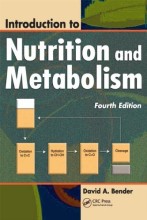General Medicine - Bariatry and Ghrelin
15 important questions on General Medicine - Bariatry and Ghrelin
What is the definition of infectious diseases? 2 types...
What is the incubation period of these infectious diseases?
This is a symptom-less stage where microbes multiply inside the body and can also spread to other people.
The length is highly variable and is dependent on the type of microorganisms and the person's immune system.
What is the period of illness characterised as?
- Higher grades + faster learning
- Never study anything twice
- 100% sure, 100% understanding
What is horizontal transmission?
What is vertical transmission?
Infectious period =
Case fatality =
Basic reproductive rate =
Secondary attack rate =
Time in which person can transmit the disease
Case fatality =
The proportion of people that diet after infection
Basic reproductive rate =
Average number of secondary cases that occur as the result of one infected individual
Secondary attack rate =
Proportion of people who gets exposed to the disease and gets ill
Who is at risk for malaria?
Regions of South-East Asia, Eastern Mediterranean, Wester Pacific and America are also at risk.
Infants, children <5yrs, pregnant women and patients with HIV/AIDS, non-immune migrants, mobile populations and travellers are at a higher risk of contracting malaria.
Diagnosis and treatment of malaria:
Treatment: artemisinin-based combination therapy (ACT)
What is tuberculosis (TB) ?
People infected with TB have 5-10% lifetime risk of falling ill with TB.
Who is at risk of getting Tuberculosis?
- It mostly affects adults in their most productive years. But all age groups are at risk.
- 95% of cases and deaths are in developing countries
- people with HIV have 18 times more change to develop TB
- the risk is also greater in persons suffering from other conditions that impair the immune system
- people with undernutrition are 3 times more at risk
- alcohol use disorder and tabacco smoking increase the risk of TB by a factor 3.3 and 1.6 respectively
How can tuberculosis be diagnosed?
Example rapid tests: Xpert MTB/RIF, Xpert Ultra and Truenat assays.
Diagnosing multidrug-resistant and other resistant forms of TB can be complex and expensive. It is hard to diagnose TB in children.
How can tuberculosis be treated?
Without such support, treatment adherence is more difficult.
What are the symptoms of HIV?
In the first few weeks, people may experience no symptoms or an influenza-like illness including fever, headache, rash or sore throat.
As the infection progressively weakens the immune system, more symptoms develop such as: swollen lymph nodes, weight loss, fever, diarrhoea and cough.
Without treatment, they could develop severe illnesses such as: tuberculosis, cryptococcal meningitis, severe bacterial infections, and cancers such as lymphomas and Kaposi's sarcoma.
How can HIV be diagnosed?
No single test can provide a full HIV diagnosis: conformatory testing is required.
The diagnostic tests detect antibodies produced by the person as part of their immune response to fight HIV. People develop antibodies within 28 days of infection.
How can HIV be treated?
The question on the page originate from the summary of the following study material:
- A unique study and practice tool
- Never study anything twice again
- Get the grades you hope for
- 100% sure, 100% understanding





























